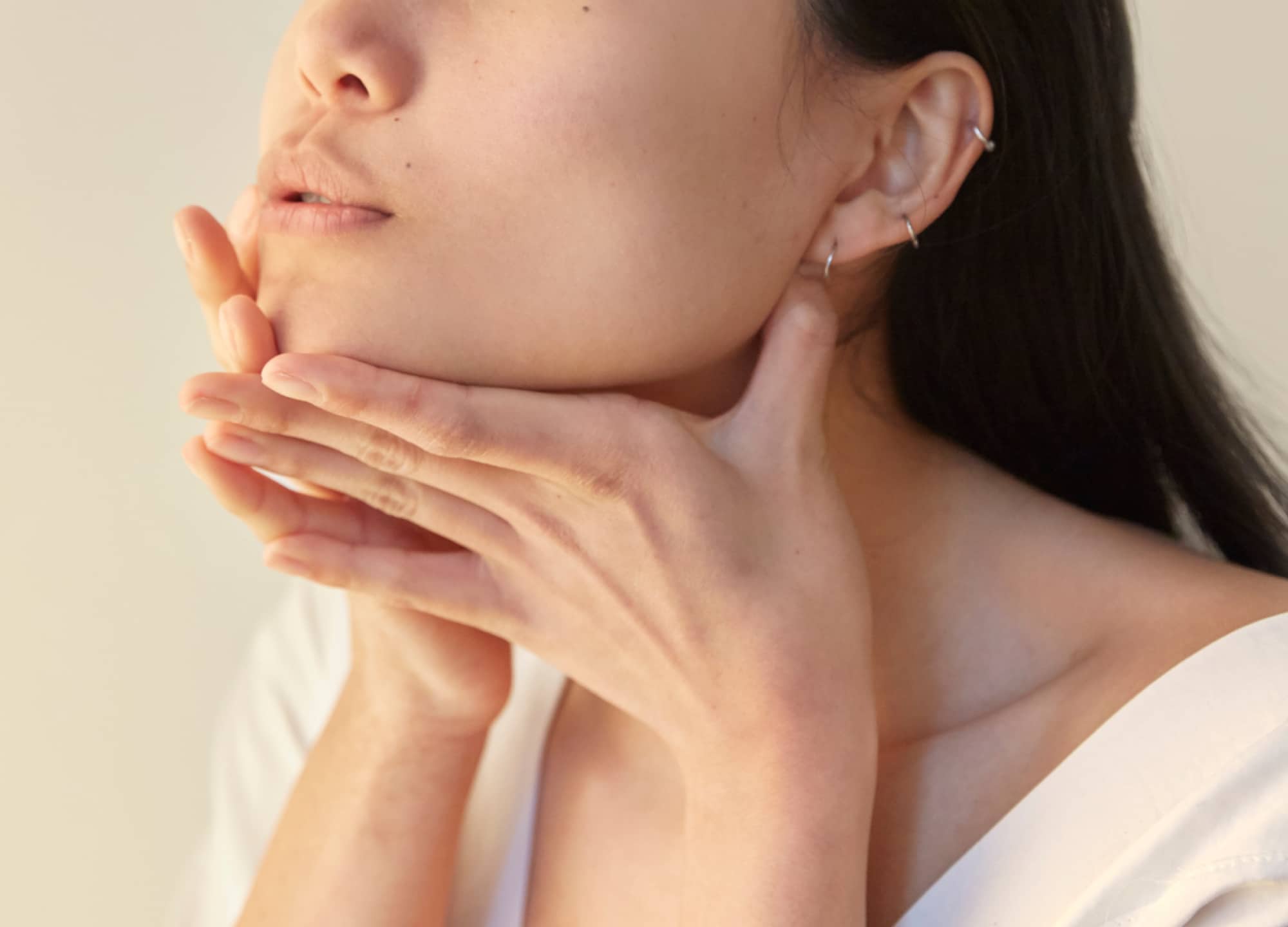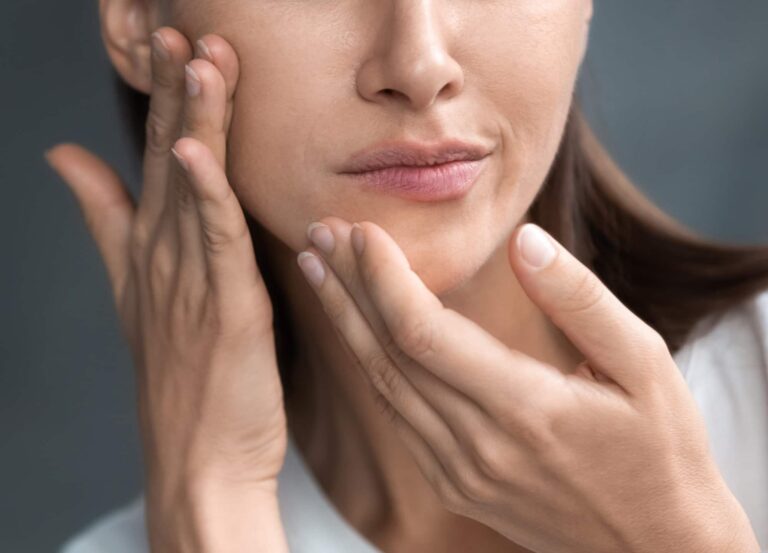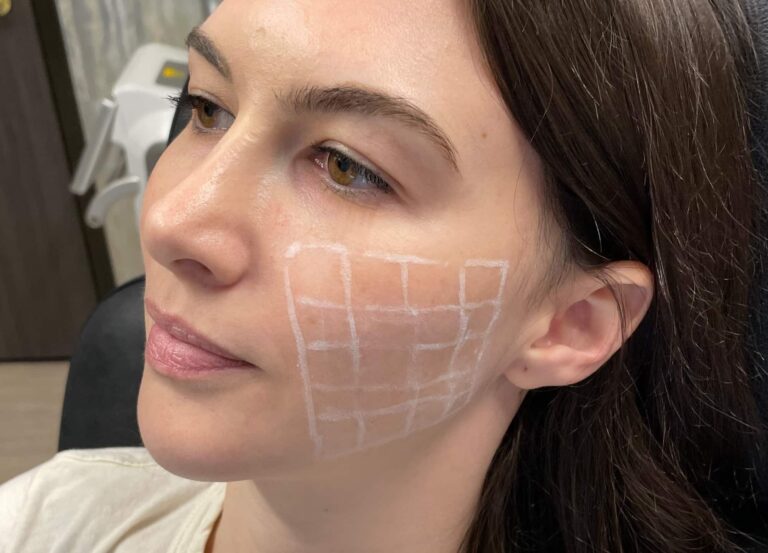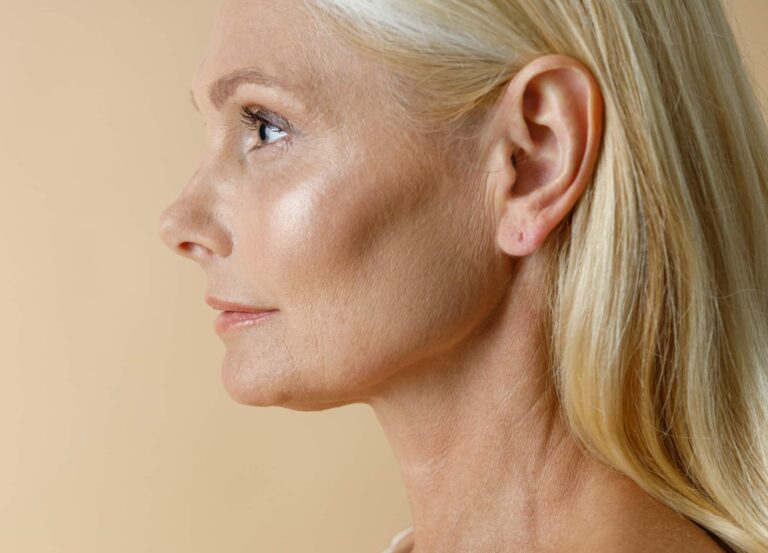“The jawline may just be the new waistline,” New York City board-certified plastic surgeon Dr. Ryan Neinstein says. And it’s true—everyone, from women in hot pursuit of a defined, strong jawline that could cut glass to incels doing the most to look more like the Chads they both envy and loathe, wants jawline contouring and definition. Many of the filters on Instagram and Snapchat help sculpt that covetable Disney prince (or princess) chiseled profile, but if you’re looking for good real-life solutions, keep reading.
How to get a better jawline with cosmetic treatments
Liposuction plus skin tightening
“An aesthetic neck has a clearly defined jaw and a gentle curve of neck skin and fat,” explains Dr. Neinstein. (This is not only what’s the most aesthetically pleasing, but also what makes for the most youthful appearance.) “It does not have to be so tight that a patient looks like a lollipop to have a great outcome.” His preferred method of treatment is minimally invasive liposculpting of the chin and neck, using both VASER and J-plasma fat-melting and skin-tightening technology. “I prefer this over traditional liposuction or Kybella, because the results are more dramatic and more predictable and have less downtime,” he explains. Dr. Adam Kolker, a New York City board-certified plastic surgeon, says that submental (under-chin) liposuction with radiofrequency assisted lipectomy (RFAL, FaceTite) is best for patients with mild or moderate excess fat beneath the chin and jawline.
Injectable filler
Dr. Kolker adds that the best way to define the jawline is to create a distinction between the jawline and neck. “While filler is not permanent, it can last up to approximately one year,” he says. He adds that for those who are uncertain about surgical implants, filler is a great option for patients to get a sense of enhanced appearance in these regions and consider surgery at a later date. Think of it as “training surgery.” “Hyaluronic acid dermal fillers [Juvéderm, Restylane] can be reversed/dissolved rapidly if necessary, so they are extremely versatile and adjustable,” Dr. Kolker says.
For Dr. Neinstein, it’s about creating a sleek look to the jaw, and he does this by adding filler after performing liposculpting to the jawbone. He uses either Restylane or Radiesse; the latter is a biostimulatory filler that works primarily by stimulating the production of collagen long-term. It offers more of a lifting and sculpting effect, as opposed to the sheer volume you get from HA fillers.“I start in the corner of the mandible and go a few inches up to the ear and a few inches forward to the mouth,” he says. He adds that while implants are still great options, he tends to choose those for reconstructive patients or those with severe anomalies. For more subtle adjustments, he prefers dermal fillers. The latter allows him to alter and adjust appearances easily as patients’ ideals change.
Chin implants
Atlanta board-certified surgeon Dr. Pravin Reddy notes that chin implants are a powerful means of achieving balance to the face and work well in conjunction with rhinoplasty for certain patients. Chin implants are made of silicone and, while they do involve plastic surgery, they can be inserted using a scarless approach. Still, he relies on fillers as well. “I sometimes use temporary fillers to augment the chin, in order to provide a preview of the final result before the patient commits to surgical chin augmentation,” Dr. Reddy says. Dr. Neinstein says that implants are great options, though he tends to choose those for reconstructive patients or those with severe anomalies.
Kybella
Kybella is a minimally invasive approach to creating a more defined jawline and works by treating fat under the chin. Dr. Reddy notes the injection is a compound that “dissolves” fat by destroying fat cells and that once destroyed, these cells can no longer store or accumulate fat. This results in a noticeable reduction in excess fat and fullness under the chin, revealing an improved chin profile. The treatment is designed to improve the contour of the neck and chin. “It generally requires a series of three or four treatments and may cause swelling and inflammation,” Dr. Reddy says.
Botox
Botox is yet another injectable that can be used to help sculpt the jawline. The primary reason for injecting Botox into the jaw muscles is to help alleviate TMJ and/or jaw pain, by relaxing the masseter muscle that connects the lower jawbone and cheekbone. “Masseter muscle hypertrophy [or enlargement] is a common source of excessive stress on the jaw joint,” explains Dr. Anil Shah, a board-certified plastic surgeon in Chicago. “Botox can lessen the force that this muscle exerts on the joint and provide relief.” The aesthetic side effect is a slimming of the jawline, especially when it’s a very muscular jawline; the Botox atrophies the muscle, so that it loses mass.
Keep in mind that Botox injections in the jaw area can be pricey, given the sheer number of units required to treat this larger muscle. (Injections are usually placed anywhere from the lower jaw to up toward the ear and temple.) Results can last up to six months, though with time you may need less Botox to achieve a similar result.
Neck lift
The ultimate jawline-defining procedure, a neck lift can lift sagging skin, remove excess fat, and tighten the platysma muscle—effectively eliminating “turkey neck” and taking years off the area. Neck lifts are commonly performed along with a facelift, brow lift, or other facial surgery, which makes it significantly more expensive than nonsurgical solutions, but results typically last 10 to 15 years.
How to get a sharper jawline without cosmetic treatments
Do jawline exercises work?
In a word, yes, and they can be a good option that doesn’t require a doctor whatsoever. More specifically, “Face yoga is a great, natural way to help you either regain or maintain a youthful appearance,” says Koko Hayashi, a face yoga instructor and founder of Koko Face Yoga. (It’s particularly effective for jawline and lower face sculpting; more on that in a moment.) And while it can easily be a stand-alone solution, she adds that it’s also a nice complement to in-office procedures. “Go have your medical treatments, then come home and do face yoga as maintenance,” she says.
Hayashi was born in Japan, where this type of facial exercise has been popular for decades. A chin implant removal at the age of 27 left her chin misshapen and bumpy, so she turned to face yoga to help resculpt her face. The impressive results motivated her to start posting YouTube videos of face yoga moves; she’s since racked up more than 20 million views and counts celebrities, including Kim Kardashian, among her clients.
The premise behind face yoga is simple: The goal is to invigorate the ‘sleeping’ muscles in the face, which just sit there and don’t move a lot, while simultaneously relaxing the muscles that are overworked, explains Hayashi. As it pertains to the jawline specifically, you want to wake up the cheek muscles and relax the depressor anguli oris muscles at the sides of the mouth; doing this in tandem creates a lifted look to the cheek and jaw, she adds.
Similarly, whenever your face is at rest, there should always be a small gap in between your upper and lower teeth. This can go a long way toward alleviating the tension on overworked masseter muscles that can ultimately contribute to jowls, she explains. Finally, focus on raising up the corners of your mouth ever so slightly. “If you’re not thinking about it, they tend to turn downwards. Consciously raising them even a millimeter helps keep the cheeks lifted and creates the look of a sharper jawline,” she says.
Cheek squat: Make an “oh” sound, followed by an “ah” sound, then smile wide so that your eight top teeth are showing and rest them on your bottom lip. Hold the position for 10 seconds, relax, and repeat two to three times. This helps to wake up and lift the resting cheek muscles, making everything below, including the jaw, look more lifted, explains Hayashi.
Tongue stretch: Roll your shoulders back three times then push them down and slowly tilt your head back, looking upward. Close your eyes and stick your tongue all the way up to the ceiling, hold for 10 seconds, and repeat two to three times. This is a great way to help eliminate the appearance of a double chin, says Hayashi (although she cautions against this move if you have any neck pain).
So how exactly do you do that? Follow these three easy face yoga moves.
Resting face posture: “The positioning of your facial muscles when they’re at rest is the most important part of face yoga,” says Hayashi. First and foremost, she recommends keeping your tongue pushed against the roof of your mouth at all times. Unless you’re speaking, eating, or drinking, your tongue should be pushed up, she says. “Look at your face from the side. As soon as you push your tongue up, it instantly lifts everything and reduces the appearance of a double chin. It’s like instant Kybella,” she says.
Does chewing gum help your jawline?
While the Internet is rife with claims that regular gum chewing is one way to improve your jawline, take those promises with a (big) grain of salt. One small study did show that chewing gum for five minutes twice a day for four weeks strengthened people’s bite force, which is in part impacted by the strength of the masseter (jaw) muscles. However, another study showed that gum chewing affected the tongue and cheek muscles more than anything else. Regardless, it’s not going to do anything to affect the other underlying structures that play a role in the shape of your jawline, such as bone and fat.











